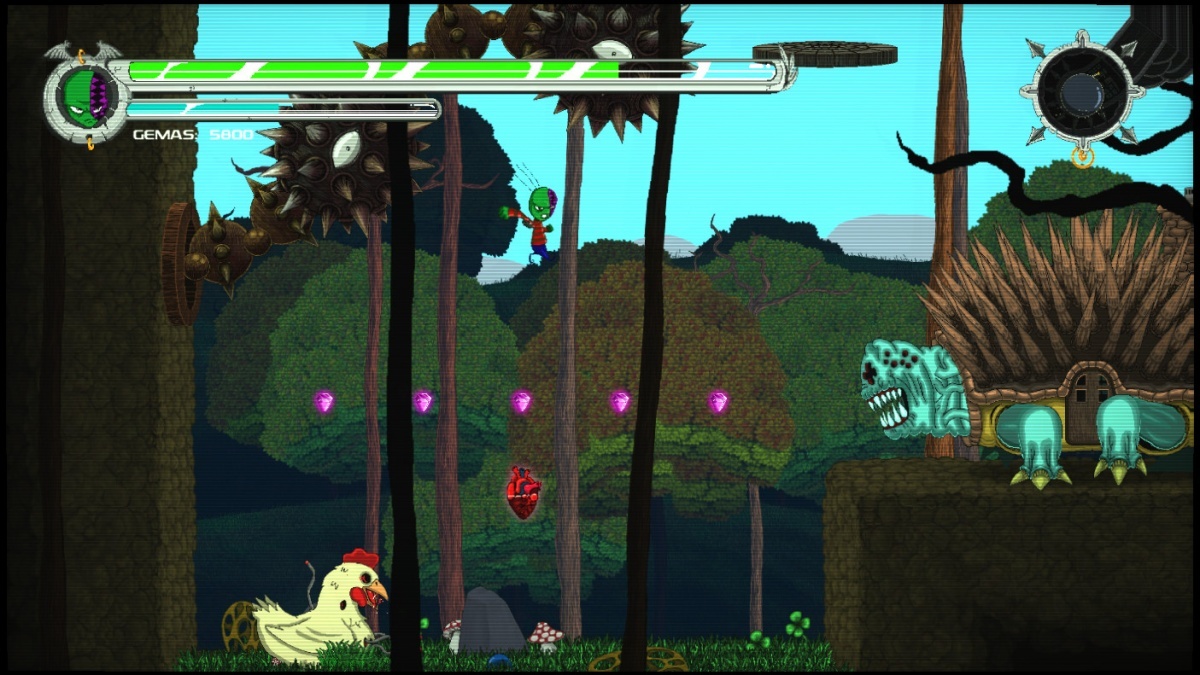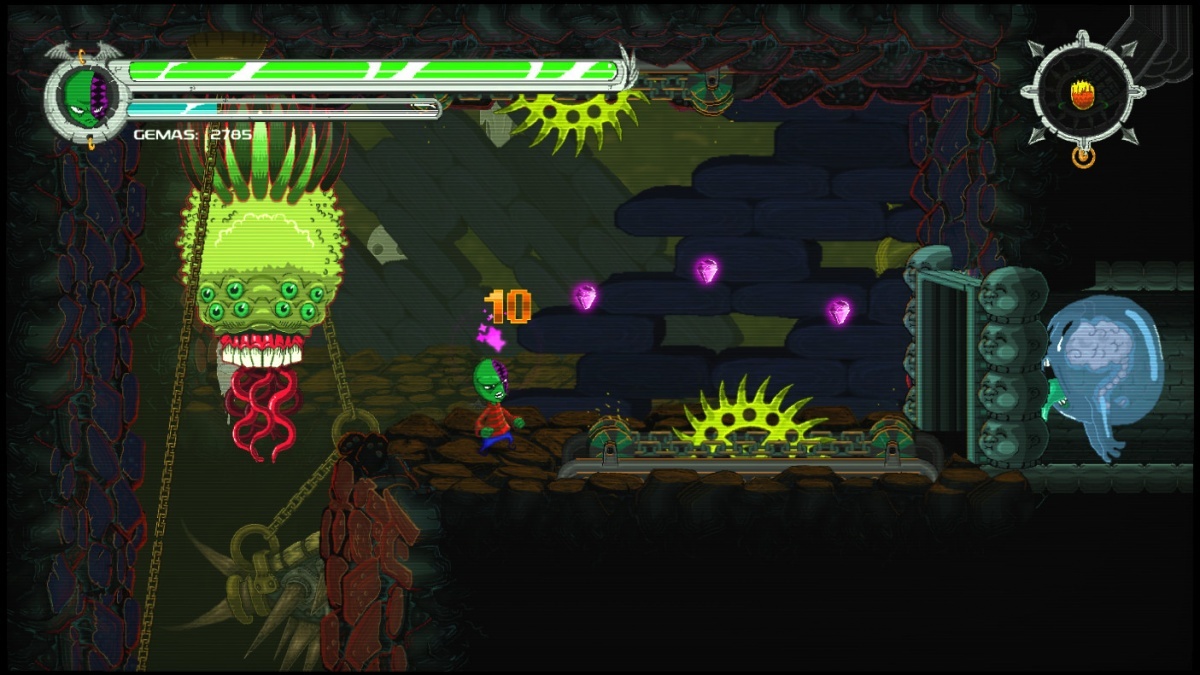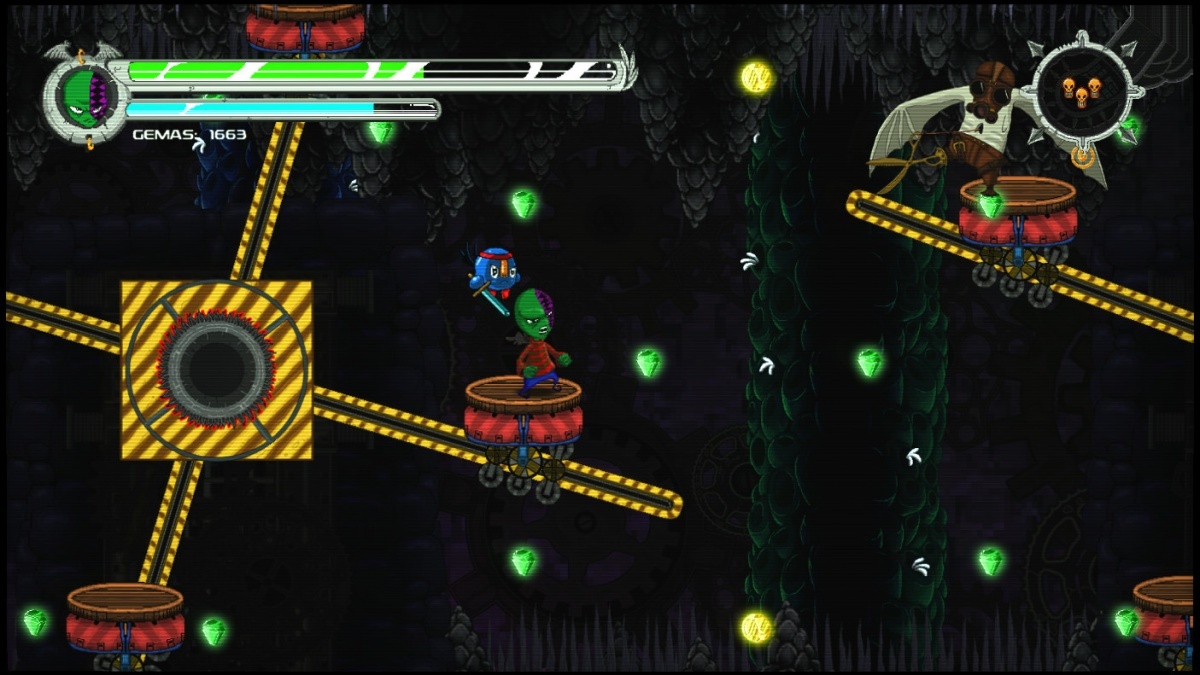Nightmare Boy (PlayStation 4) Review
By Josh Di Falco  12.12.2021
12.12.2021

It's hard to play a 2D metroidvania title nowadays without making unfair comparisons to other recent titles, such as Hollow Knight, but developer The Vanir Project has done enough here with Nightmare Boy to help it stand on its own feet. It's a short adventure title that stars Billy, as he gets magically teleported to the Kingdom of Noctum by an evil pillowcase called Balder, where he gets mistaken for Prince Rolok. It's a goofy experience with plenty of light-hearted humour, with quite a dark undertone that doesn't overburden the story with too many heavy elements, despite some of the themes at play here. With a really cute, but simultaneously gritty aesthetic that is equally as uncomfortable as it is appealing to look at, Nightmare Boy walks that fine line right through to the end of the tale. With areas to explore, nasty bosses to vanquish and new abilities to unlock - this is an interesting title to check out that explores some cool ideas, though it may not stick the landing with everything.
Nightmare Boy doesn't take long to get into the thick of it, with the titular character Billy going to sleep that night. From the moment his head hits that pillow, his world changes, as his pillowcase reveals itself to be an evil sorcerer, who then proceeds to turn Billy into a zombie-like creature whilst he is trapped in this nightmare. His bedroom no longer leads to the corridor in his house, but rather it leads to a nightmarish world filled with demons and other such foul beasts and creatures. Luckily for him, he encounters a winged figure who mistakes Billy for being his brother, Prince Rolok - and decides to assist Billy on his journey for revenge by granting him new abilities and upgrades. Billy then embarks on his quest to find the evil sorcerer so that he could be turned back, as well as return to his world.

While Billy can punch out enemies, he soon begins to add to his arsenal by learning new abilities, such as shooting fireballs, or learning to double-jump, or even doing the ground pound to break through destructible floors. For those who have played other metroidvania titles, there won't be much here that will be different, but as such it does make Nightmare Boy quite easy to jump in and pick up on due to the familiarity of it. However, even for those who aren't used to these styles of games, this title does provide enough assistance to help newcomers learn the "rules," so to speak. For example, most walls cannot be broken - however if a wall bounces, jiggles, or if the map overview shows a gap in the room's outline, then chances are Billy has stumbled upon a secret area. However, not every area can be explored to every inch on the first pass through. Billy will need to find new abilities and come back to previous areas to reach new areas. Some puzzles or secrets may seem obvious at first, while other secrets require a bit more digging to find. The trick here is to search as much as possible and use the map to ascertain whether a room has been completed or not, and whether there may be more to discover.
Don't expect Nightmare Boy to be to a similar scale of a Hollow Knight, though. While the map promises to be "open," with Billy being able to explore anywhere that his heart desires, the majority of the experience is quite linear. Simply put, Billy will begin with two possible areas to explore: one area that is inaccessible due to an ability that he is lacking, and the other area where he will find the ability he requires to access the first area. Each region has a major boss who generally gives Billy a new ability upon defeat, which can then help Billy access the next region. While the first playthrough was fine to experience the first time, the limited pathway forward did rob the journey in following playthroughs, with very little deviation allowed.

Things also seemed a little rough amongst some of the NPCs Billy encounters throughout the journey. For example, early on he meets the leader of the Mongos, who are harmless and cute little creatures, and he warns Billy not to attack them. Of course, if Billy disobeys him, the leader makes it known that Billy won't receive any further gifts or assistance from him, which he lives up to for the remainder of the playthrough. But upon replaying the title and this time, choosing to listen to him by doing a passive run, it turns out the leader of the Mongos won't help Billy anyway and this promised "gift" never eventuates. Billy will also come across other children who have been trapped in this nightmare as well, and they are generally freed when Billy defeats the boss, except for a couple of children who require certain items so they can be freed. However, most of the abilities in Nightmare Boy exist to enhance the platforming elements; and while there are a couple of abilities that are designed for combat, they are oftentimes useless or impractical to perform in battle, so they end up becoming wasted space.
The maps also have designated save rooms, which humorously have the Grim Reaper reading a book from behind a desk, and these rooms are generally found during the transitions from one area to the next, or just before a big boss fight. Interestingly, saving also has a layer of strategy to it. On his journey, Billy will collect gems that act as the currency, and every time he saves at the Grim Reaper's office, the charge of saving increases. So, the more saves that Billy does, the more expensive the next save is going to cost him. While this doesn't fully dissuade people from saving every time they pass the save area, it does provide an extra thought or two before making that decision to save now, or save later. However, each screen respawns all the enemies and the gems that litter the screen, so farming to save up the required funds to save progress undoes the 'pay to save' mechanic anyway.

The gameplay itself feels a little rough; platforming games generally rely on precision jumps and tight controls, however Nightmare Boy does seem to have a 'heaviness' to the movements and jumps. Double jumping to ledges felt like Billy was carrying bricks in his pants, and many times there was bated breath as it looked like Billy may struggle to close the gap to the next ledge; plus, there always seemed to be a delay with the jump or attacks from when the controller buttons were inputted. This did make this quite annoying to play, and it made the progression feel like a dull slog. Even the combat animations don't quite come across as "clean," with plenty of fights seemingly feeling like a flip of the coin as to who will come out on top. Button-mashing to victory seemed to be the way to go for most of the fights, but oftentimes Billy may lose the battle because it was difficult to distinguish what was going on, thanks to the animations that often got in the way of the fights.
When it comes to replaying Nightmare Boy, the biggest gripe was the inability to skip through cut-scenes. During the adventure, Billy will engage in plenty of dialogue with the NPCs that he comes across, and these can be tiresome to sit through again on subsequent playthroughs. Having the ability to skip through them with faster text would've made the next few runs less gruelling to get through. No jokes, the slow text can try one's patience more than the "heavy" jumps, especially when starting a new game requires sitting through five minutes of dialogue before Billy can get into the thick of things.

Cubed3 Rating
Average
Nightmare Boy is a fun experience for a few hours, and a lot of the glaring design choices around the gameplay can be overlooked or ignored for the most part. While Billy may feel heavy to control, he does almost always make it to the platforms, while the fighting systems are quite basic, but it allows for the focus to be on the exploration side of things instead. In terms of the aesthetic of the various areas as well, The Vanir Project has done a terrific job in stylising the different sections and making every area feel fresh and new, without getting bogged down with repetitive enemies. While the platforming-based abilities work well, the combat-based abilities leave a lot to be desired, as they lack any flexibility within the combat arena, and even when those abilities are fired off, they do little damage to be worth its while compared to the base attacks. While this can be replayed, there's very little incentive to do so.

![]() 5/10
5/10
![]() 0
(0 Votes)
0
(0 Votes)
 Out now
Out now  Out now
Out now  Out now
Out now  Out now
Out now Comments
Comments are currently disabled

 Sign In
Sign In Game Details
Game Details Subscribe to this topic
Subscribe to this topic Features
Features





 Top
Top

